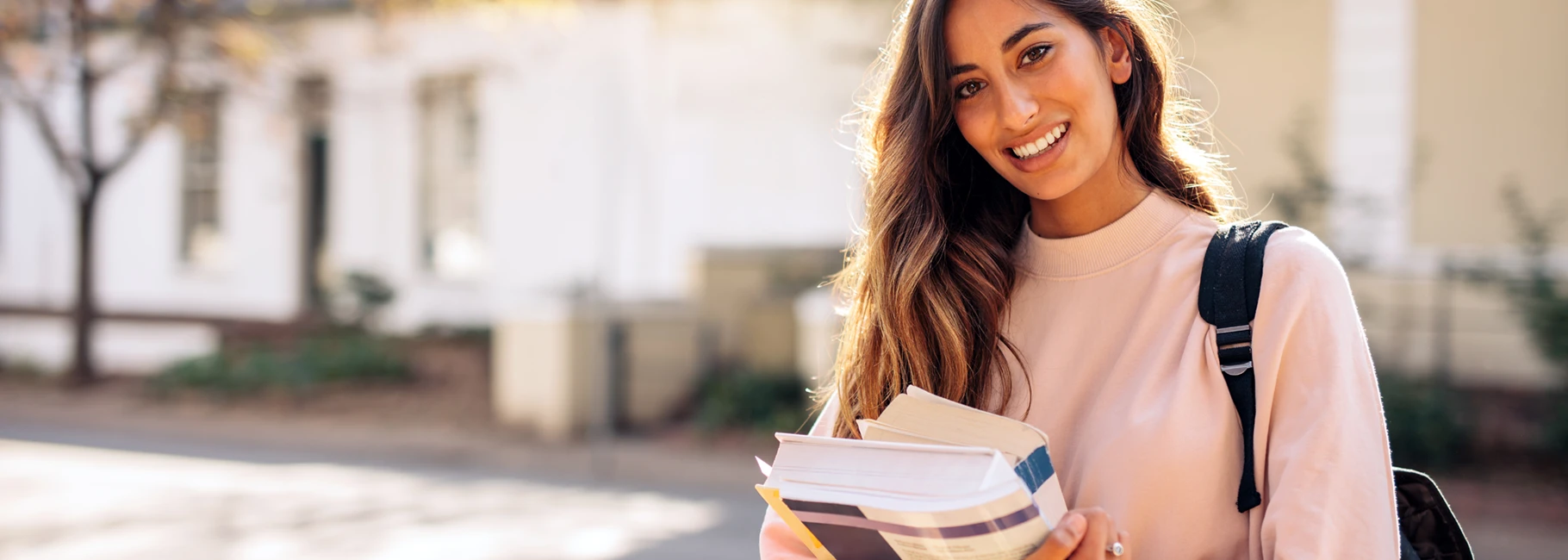By Cara, IvyWise College Admissions Counselor
I’ve spent a lot of time over the past several years thinking about the answer to one (admittedly nerdy, very college counselor-y) question: If I could go to college all over again, which school would I choose? I attended a medium-sized research institution in a major city in the southern U.S. and had a very good experience. But as my current self? I would undoubtedly choose a college for women. And if we’re getting specific, it would be Scripps College. (Come on, they have fruit trees on campus!)
What Are Women’s Colleges?
Women’s colleges were initially founded to meet the needs of 19th century women who wanted a higher education — at the time, it was widely believed that education would make women unfit for their traditional roles as wives and mothers. Before 1835, not a single college in the U.S. admitted women, and many prestigious colleges did not admit women until the latter half of the 20th century. Some women’s colleges have since gone co-ed, but several maintain their status as women’s colleges. These are predominantly small liberal arts undergraduate colleges, though some offer graduate school programs.
What Is the Purpose of Women’s Colleges?
Women’s colleges have been refining women’s education for generations. The first women’s colleges were founded as teaching colleges, since teaching was one of the few acceptable occupations for women at the time. Modern-day women’s colleges now offer a wide range of academic fields, from liberal arts to STEM. Of course, college is a time for learning, but a women’s college can give you so much more, too: You will find your voice, form your own belief system, and build your confidence in interacting with the world.
The History of Women’s Colleges
Women’s colleges are a huge element in the history of women’s rights. In the late 19th century, women represented approximately 5% of the workforce, increasing to 14% in 1930. Due in part to the Great Depression and other socioeconomic drivers, that number decreased throughout the middle half of the 20th century to 10.8% in 1950. Many barriers kept women from the workforce, and quotas restricted their access to higher education as universities set limits to the number of female students they would admit. For example, under Stanford’s quota system, three males were accepted for every female. In 1969, Yale also set quotas for admittance of women. Legislation in the 1960s and 1970s that demanded equal treatment of men and women helped eliminate some of these barriers.
Starting in the 1830s, advocates of higher education for women followed two paths: They established co-educational institutions like Oberlin, founded in 1833, or they opened women’s colleges. Beginning in 1836, dozens of women’s colleges sprung up, largely in the Northeast and the South. Some of the most prominent early women’s colleges were the “Seven Sisters,” a group of schools that began admitting students between 1837 and 1889. These colleges — Vassar, Wellesley, Smith, Bryn Mawr, Barnard, Radcliffe, and Mount Holyoke — stood out for their commitment to academic excellence. Women were barred from most Ivy League schools during this time, though Cornell would become the first to admit female undergraduates in the 1870s. Alongside independent liberal arts colleges, 19 new Catholic women’s colleges opened their doors between 1900 and 1930.
In more recent history, many women’s colleges have modified their admission policies to include a wider range of gender identities, including those who identify as gender queer, nonbinary, or transgender women.
What Are the Benefits of Attending Women’s Colleges?
There are so many factors to consider as you begin looking at colleges — size, location, setting, academic program, etc., but remember that there are the intangibles as well: Will you feel comfortable socially? Will it stretch you and nurture you in the ways that are just right for you? So, as you build your college list, why should you consider a women’s college?
You will be steeped in who you are for four years. You will be honored, seen, heard, chosen. Women get all the internships, research positions, and educational opportunities. You’ll never feel quite so empowered as you will at a women’s college, where women lift each other up and make each other better.
Are you ready to be a member of an insanely loyal alumni network? Good! Women’s college alumnae are ready to put the resumes of young college graduates at the top of the pile because they know what you will bring to the table.
Women are leading. Eighty percent of college student body presidents are men. You can choose a school where every single leader identifies as a woman and where leadership programs are designed specifically to help women navigate the world. Watch what happens when you put yourself in an environment created to build your confidence and help you cultivate a strong sense of self — it’s pretty amazing!
It’s academically challenging and engaging. National surveys of student engagement show that students who attend women’s colleges report more engagement than their peers at co-ed institutions. They are more likely to feel academically challenged, engage in active and collaborative learning, and report greater increases in self-confidence.
Notable Women’s Colleges
Several women’s colleges are highly renowned, not just for their rigorous academic programs, but for their emphasis on developing strong leaders and providing opportunities for women. Below are some of the most notable women’s colleges in the U.S.
- Wellesley College, founded in 1870 in Wellesley, Massachusetts, is one of the Seven Sisters. Students can choose from among 50 majors.
- Smith College is another Seven Sisters institution. Founded in Northampton, Massachusetts, in 1871, Smith offers an open curriculum to allow students to pursue a range of interests without having to meet core requirements.
- Barnard College in New York City shares access to courses, resources, and extracurricular activities with Columbia University. One of the Seven Sisters, Barnard was founded in 1889.
- Bryn Mawr College is another Seven Sisters college founded near Philadelphia in 1885. Students have additional opportunities at Haverford College, the University of Pennsylvania, and Swarthmore College.
- Scripps College in Claremont, California, was founded in 1926. It’s particularly known for its beautiful campus, which is listed in the National Register of Historic Places.
- Mount Holyoke College in South Hadley, Massachusetts, is the oldest Seven Sisters institution, founded in 1837. Students can choose from among 48 majors emphasizing STEM, social science, and humanities disciplines.
- Spelman College was founded in Atlanta, Georgia, in 1881. Both a women’s college and a Historically Black College or University (HBCU), Spelman is the sister school to Morehouse College, a men’s HBCU.
- Agnes Scott College, located in Decatur, Georgia, was founded in 1889. The school is known for its innovative core curriculum, which emphasizes digital literacy, leadership development, professional success, and global learning.
What to Consider When Researching Women’s Colleges
Of course, the college search process is about finding the place that will fit and stretch you in the right ways, and a women’s college may not be the right spot for everyone. You’ll have the typical considerations that come with any college in terms of finding the right fit, but you’ll also have some unique factors to consider.
For starters, consider how much interaction with other genders you prefer. Wellesley College, for example, is a more immersive all-women’s experience than Barnard College, where you’re right next door to a co-ed institution and in the middle of a city. At Scripps College, you’ll find yourself within half a mile of four co-ed institutions. Depending on the school, while your residential experience would be among students who identify as women, your life outside of your dorm would not necessarily be the same. Also consider that each college has its own admission and attendance policies, but as of 2015, several colleges introduced policies extending acceptance to any applicant who identifies as a woman. Mount Holyoke created an even more inclusive policy that is open to non-binary students as well.
Consider the variety among the Seven Sisters colleges alone: Barnard College, Bryn Mawr College, Mount Holyoke College, Radcliffe College, Smith College, Vassar College, and Wellesley College. Some were founded as partners to all men’s institutions, and others as separate institutions. Some continue in those partnerships, like Barnard, which is linked to Columbia University. Radcliffe merged with Harvard College in 1977, and Vassar has since become co-ed. Of course, there are many women’s colleges beyond the Sisters that range from north to south, predominantly white to historically black, pre-professional to liberal arts.
Many participate in a consortium with other nearby colleges to provide a wide range of academic and extracurricular options. For example, Mount Holyoke and Smith are both members of the Five-College Consortium with Hampshire College, the University of Massachusetts at Amherst, and Amherst College. Students at any of the five colleges can take classes at any of the other four schools. Similarly, students at Scripps College can take classes at the other schools in the Claremont Colleges Consortium — which includes Claremont McKenna College, Harvey Mudd College, Pitzer College, and Pomona College — and vice versa.
Most women’s colleges are small, with small class sizes and a tight-knit college community. So, if you’re envisioning a large college experience, it might not be the right fit. At a small school, faculty-student relationships are front and center, discussion-based learning is the norm, and you’ll know people everywhere you go on campus. The small size also means prospective students face a deeply holistic application review process.
IvyWise Tips for Successful Applications
Although your grades in your high school courses will remain the most important factor of your application, women’s colleges also try to get to know you as a human and as a community member. They’ll look for instances where you showed personal growth, self-awareness, and leadership qualities, among many other aspects. It will be especially important to use your essays to highlight these types of personal characteristics and experiences.
So, as you’re building your college list, consider researching and visiting a women’s college — and don’t be afraid to ask questions of a current student or the admissions office. It might affirm you. It might surprise you. And it might just be the perfect fit. Contact us today for more information on our services and how we can help you create a balanced list of best-fit colleges as part of your college prep.



